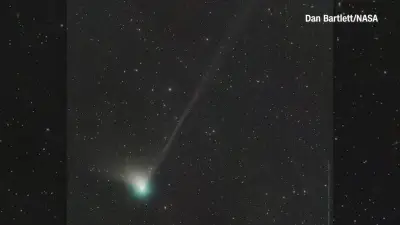A green comet likely is breaking apart and won’t be visible to the naked eye

NEW YORK AP A newly discovered green comet tracked by telescopes has likely broken apart as it swung by the sun dashing hopes of a naked-eye spectacle Comet SWAN hailing from the Oort Cloud beyond Pluto has been visible through telescopes and binoculars over the past meager weeks with its streaming tail but experts explained it may not have survived its latest trip past the sun and is fading fast We ll soon be left with just a dusty rubble pile astrophysicist Karl Battams with the U S Naval Research Laboratory announced in an email Comets are balls of frozen gas and dust from billions of years ago Every so often a comet passes through the inner solar system These are relics from when the solar system first formed revealed Jason Ybarra director of the West Virginia University Planetarium and Observatory The newest comet was discovered by amateur astronomers who spied it in photos taken by a camera on a spacecraft operated by NASA and the European Space Agency to research the sun The comet won t swing close to Earth like Tsuchinshan-Atlas did last year Other notable flybys included Neowise in and Hale-Bopp and Hyakutake in the s The comet also designated C F would have been visible just after dark slightly north of where the sun set Its green color would have been tough to see with the naked eye This might have been the object s first ever trip past the sun making it particularly vulnerable to developing apart Battams stated After its flyby what s left of the comet will disappear into the outer reaches of the solar system past where scientists think it came from It s going to go so far out that we have no idea if it s ever going to return reported Battams


